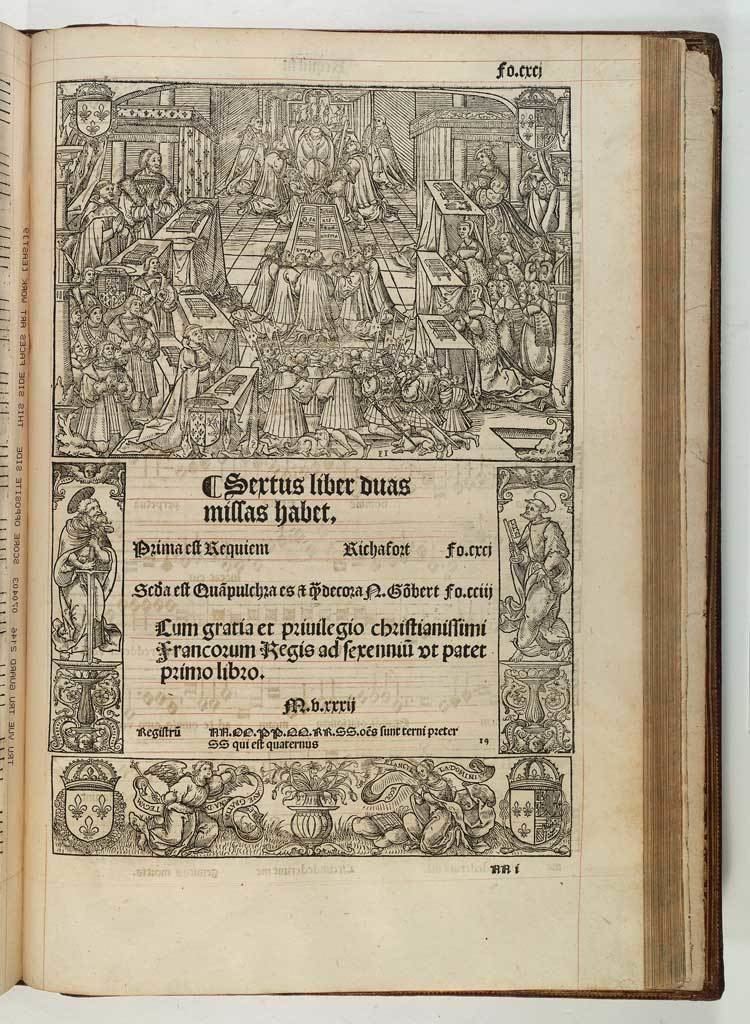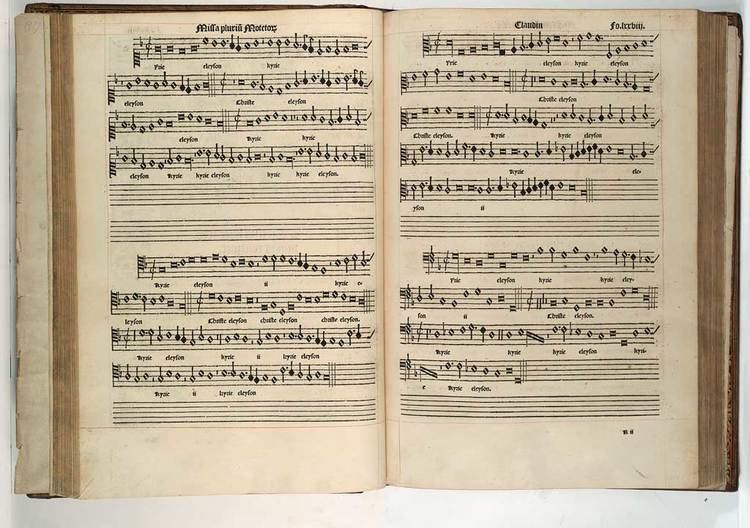Name Pierre Attaingnant Role Musical Artist | Died 1552, Paris, France | |
 | ||
Similar People Pierre Certon, Tielman Susato, Adrian Willaert, Jacob Clemens non Papa, Candice Night | ||
Tourdion claude gervaise pierre attaingnant crumhorn viol drums
Pierre Attaingnant (or Attaignant) (c. 1494 – late 1551 or 1552) was a French music publisher, active in Paris.
Contents
- Tourdion claude gervaise pierre attaingnant crumhorn viol drums
- Tourdion pierre attaingnant lute
- Life
- Works
- In popular culture
- References

Tourdion pierre attaingnant lute
Life

Attaingnant is considered to be first large-scale publisher of single-impression movable type for music-printing, thus making it possible to print faster and cheaper than predecessors such as Ottaviano Petrucci. Attaingnant is often credited with being the first to develop this technique; however, sufficient evidence exists to suggest that John Rastell, an English printer in London, was the first to use single-impression printing in 1520. Attaingnant published over 1500 chansons by many different composers, including Paris composers Claudin de Sermisy, Pierre Sandrin and Pierre Certon, and most prominently Clément Janequin with five books of chansons. Attaingnant acquired royal privileges for his music books, which were renewed many times. Eventually he was named imprimeur et libraire du Roy en musique (Royal music-printer and librarian).
Works

Attaingnant's major contribution to music printing consists in his popularizing the single-impression method for music printing, which he first employed in his 1528 publication Chansons nouvelles en musique à quatre parties. In this system, the individual notes were printed directly onto segments of staff, and so the notes, staff lines, and text could all be printed with one send through the printing press. The main disadvantage of this method was the alignment of the staff lines, which often had a “bumpy” look—-some being slightly higher or slightly disjointed from others. Nevertheless, this method became standard music printing practice across Europe in the 16th and 17th centuries.

Apart from his 36 collections of chansons, he also published books with pieces in lute or keyboard tablature, as well as Masses and motets.

Among the most important documents for the keyboard music in general and in French Renaissance keyboard music in particular are the seven volumes published by Attaingnant in Paris in the spring of 1531:

- Dixneuf chansons musicales reduictes en la tabulature des Orgues Espinettes Manichordions, et telz semblables instrumentz musicaulx... Idibus Januraii 1530 (sic).
- Vingt et cinq chansons musicales reduictes en la tabulature des Orgues Espinettes Manichordions, et telz semblables instrumentz musicaulx... Kal. 1530 (sic).
- Vingt et six chansons musicales reduictes en la tabulature des Orgues Espinettes Manichordions, et telz semblables instrumentz musicaulx... Non. Frebruaii 1530 (sic).
- Quatorze Gaillardes neuf Pavennes, sept Branles et deux Basses Dances le tout reduict de musique en la tabulature du jeu d'Orgues Espinettes Manicordions et telz semblables instrumentz musicaulx... (February 1531 ?).
- Tabulature pour le jeu d’Orgues, Espinettes et Manicordions sur le plain chant de Cunctipotens et Kyrie Fons. Avec leurs Et in terra, Patrem, Sanctus et Agnus Dei... (March 1531).
- Magnificat sur les huit tons avec Te Deum laudamus et deux Preludes, le tout mys en tabulature des Orgues Espinettes et Manicordions, et telz semblables instrumentz... Kal. Martii 1530.
- Treze Motetz musicaulx avec ung Prelude, le tout reduict en la Tabulature des Orgues Espinettes et Manicordions et telz semblables instrumentz... Kal. Aprilis 1531.
In popular culture
One of the pieces published by Attaingnant has been used three times in 20th- and 21st-century popular music:
Another melody published by Attaingnant is used in several songs:
The original can be heard below, in the first sample, Quand je bois du vin clairet. An alternative version for lute solo also exists, in Attaingnant's printed works.
